
Case Study: Spotify Together
Because we’re living in the time of COVID and social distancing, we decided to look for opportunities for connection. One way we connect is through music.
As a team we chose to work on a new feature for Spotify. We decided to focus on the music and podcast sharing element between individuals and groups. Since people interact in different ways, areas of opportunity included inIntegrating real time voice, conversation, reaction, and sharing real time.
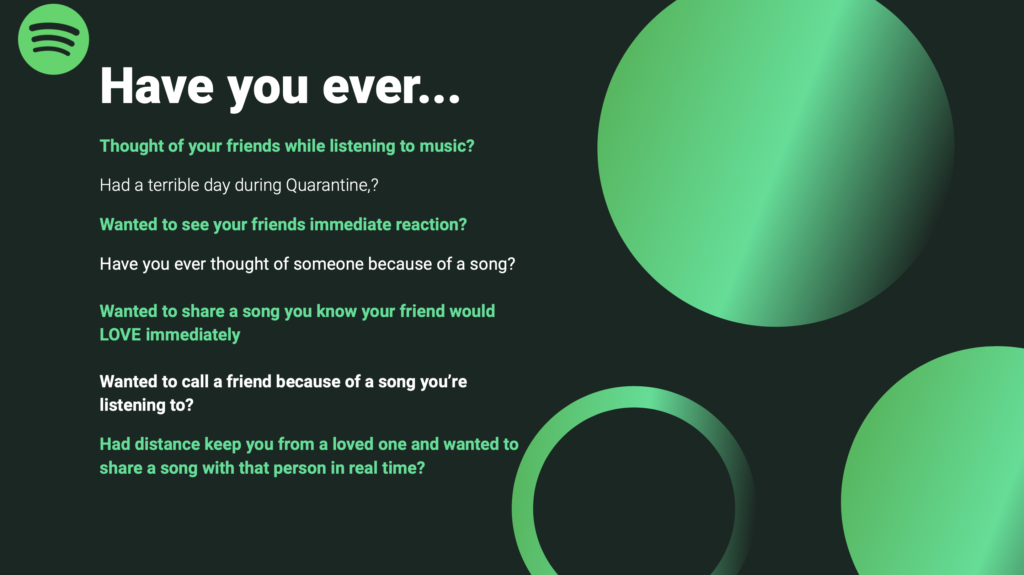
My Role
As someone who tends to grasp the Big Picture quickly and is comfortable in leadership positions, I took on the role of Team Lead and project manager.
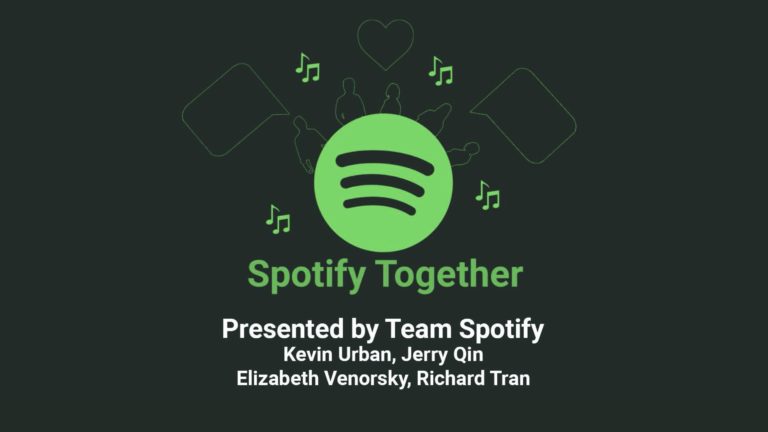
Our Team
Richard Tran – prototyping, wireframes, ideating and user flows
Elizabeth Venorsky – Presentation design, design, wireframing, sketching, ideating, personas

Dunbar's Number
Dunbar’s number simply states that the human brain can only keep track of 150 relationships at one time. These relationships include close family, extended family, work, and other. Close relationships are a necessity for our species to survive.
Social media has allowed us to expand that number of interactions exponentially, in addition to making those relationships available 24/7. As a result, some might say we’re more stressed as a result. But I digress.
Side Note: As an exercise, If you think about the number of people you interact with over the course of a week. You might just max out at 150. I’d be curious to know you thoughts.
Initial Hypothesis
Based off of Dunbar’s Number and Research from MIT that suggested 5 is the magic number when it comes to groups we decided to think a little differently.
With every social media site and influencer focus on expanding their network. What if we were to focus our efforts on contracting the interactions on Spofity? Could that bring more user satisfaction.

Research
We decided to dive right in to the research by posting a Google Survey our social media accounts.
We initially thought our solution would target both music and podcast listening. After looking at the research, we realized that while the feature could be used for both, there were enough differences, that we decided to focus on only the music aspect of Spotify and the Podcast element to the backlog.
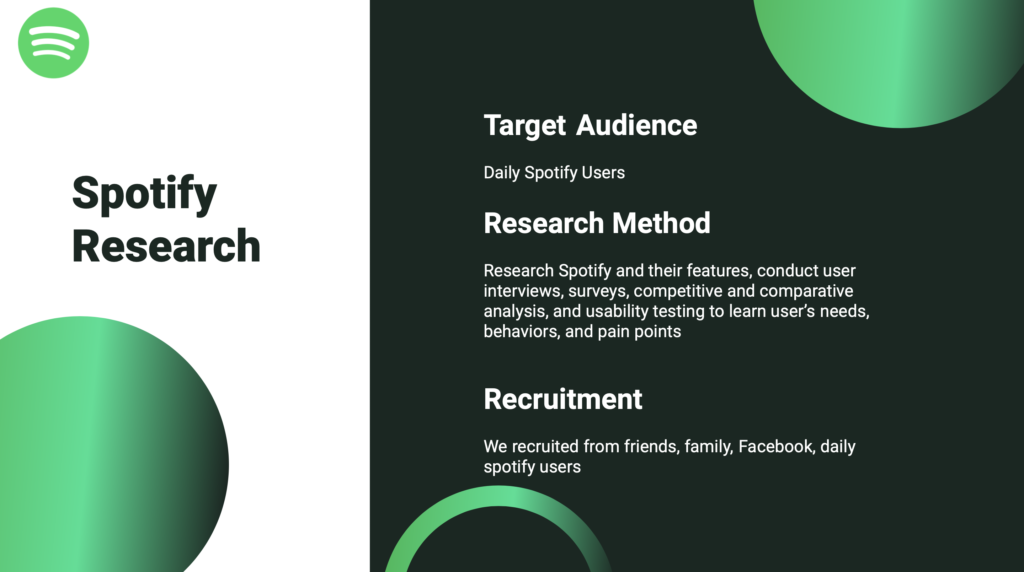
Affinity Mapping: Key Insights
After looking at our Affinity Map, we discovered two opportunities.
1. Our users were interested in listening to music in real with other users.
2. Our users were frustrated that they were not able to save their music listening history.
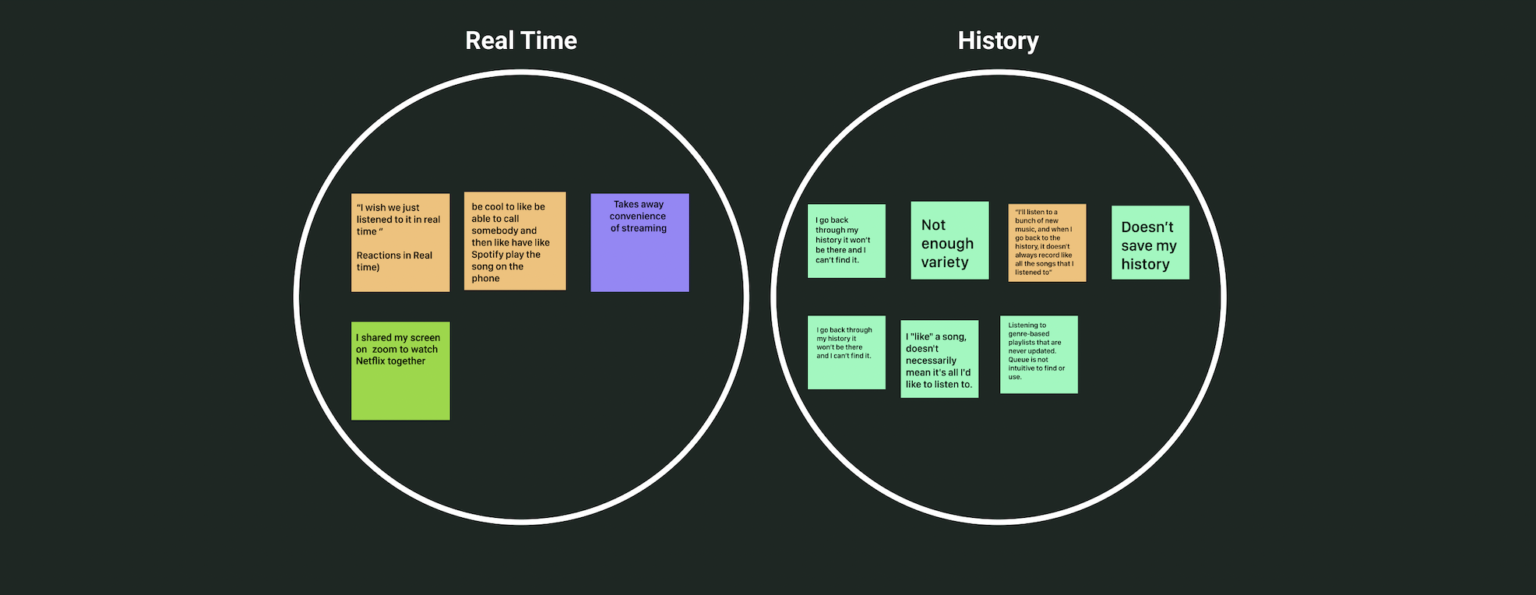
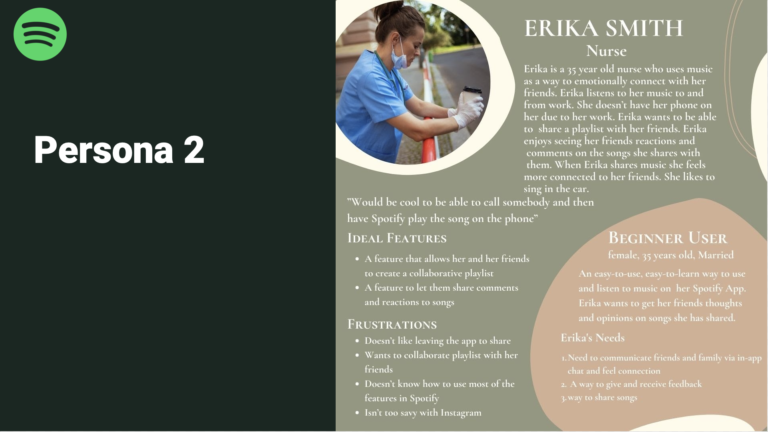

They Solution Journey: Empathizing with the user.
We developed two persona’s for this project. For the purposes of this study, I’ll focus on Erika.
Erika is an overnight nurse working through times of COVID. The past year has been grueling and in some ways lonely…especially because she’s seeing the effects of COVID first hand, while being cut off from her friends due to her work schedule.
Music is one of her pleasures and she misses sharing her music with friends in person, in real time.
We created a journey map to demonstrate a way that our feature could potential support her well being. In this scenario, Erika
Erika gets off her tough shift, emotionally she’s drained. She looks at her phone and see’s her friend shared a song. That gives her the smile she needed.,
Based off of our data, we identified our...
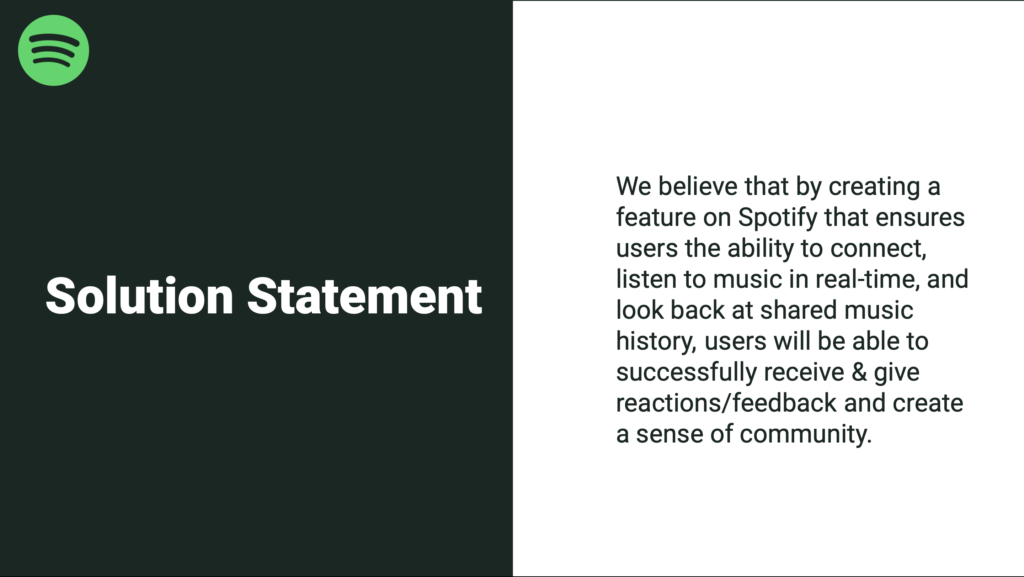
We then narrowed down our features list
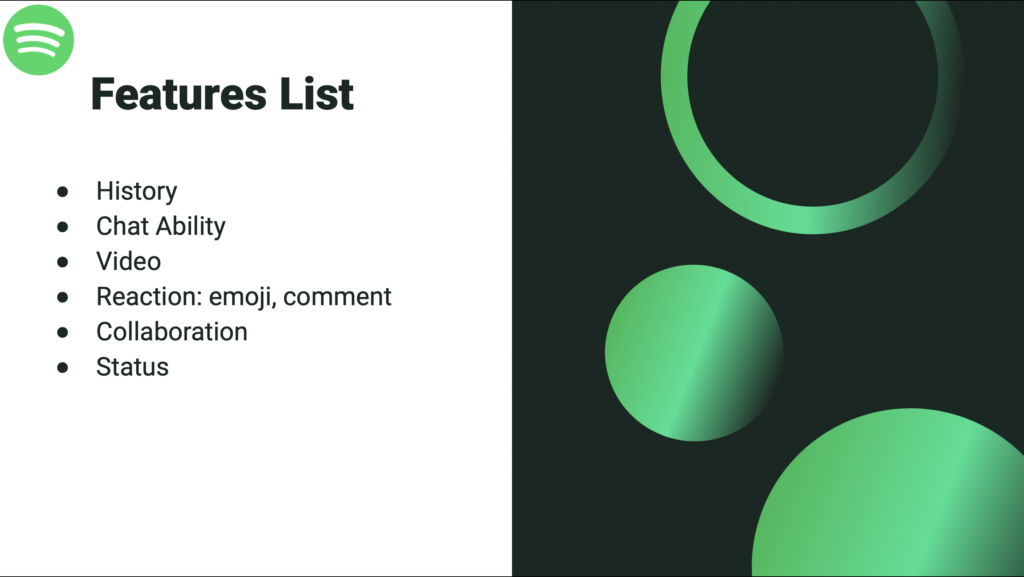
Identifying the needs of the business
By add these features, we determined that paid subscription would increase as users were introduced and became familiar with the benefits of real time listening, the ability to share songs and have a record of your song history. In addition the daily song share has the potential to increase user interaction as users experience the benefits of social interactions from the direct result of a shared song.
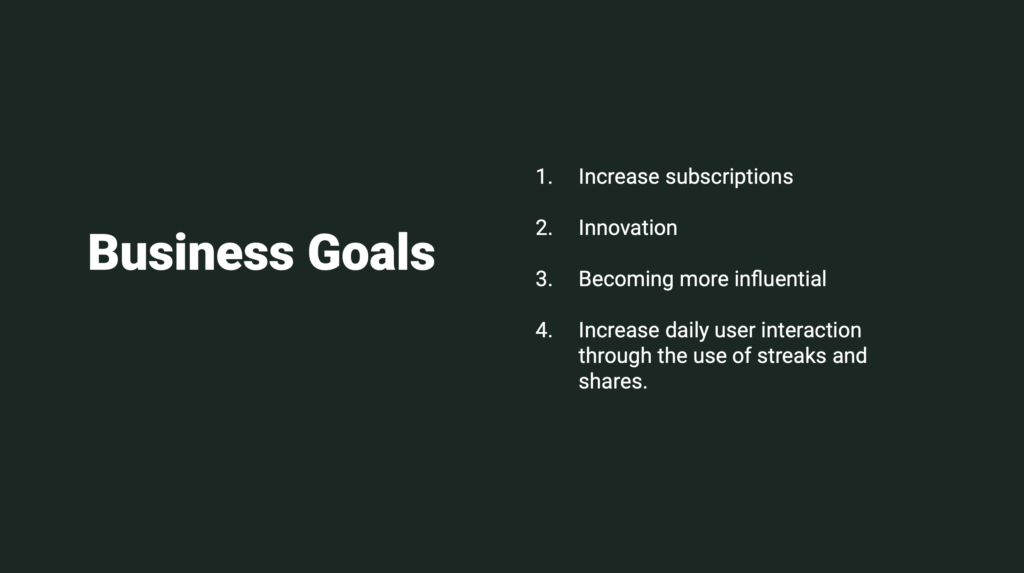
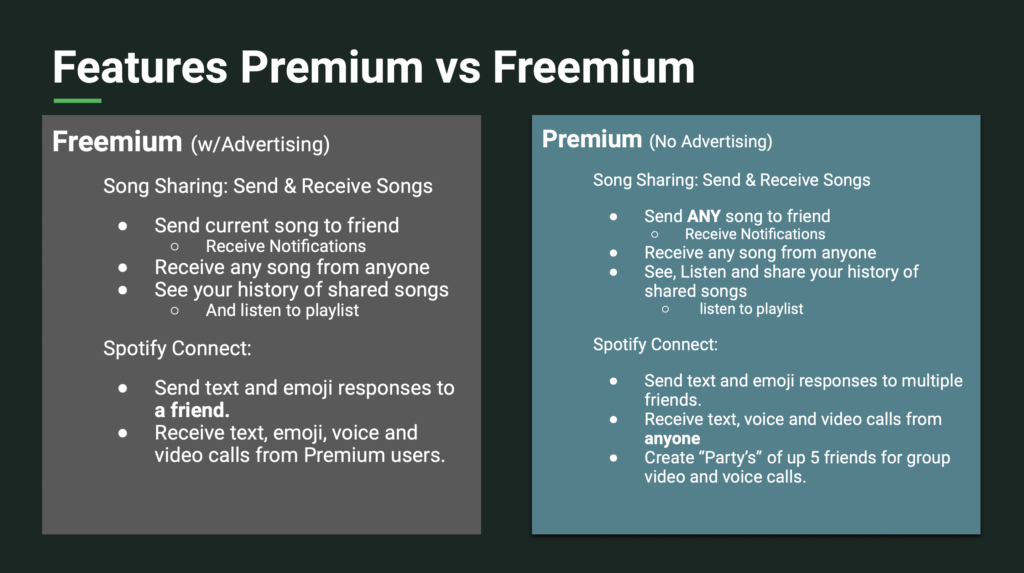
Increasing User Interaction
Additions to Spotify IA
We were able to identify where our features AI would fit into the existing Spotify IA.
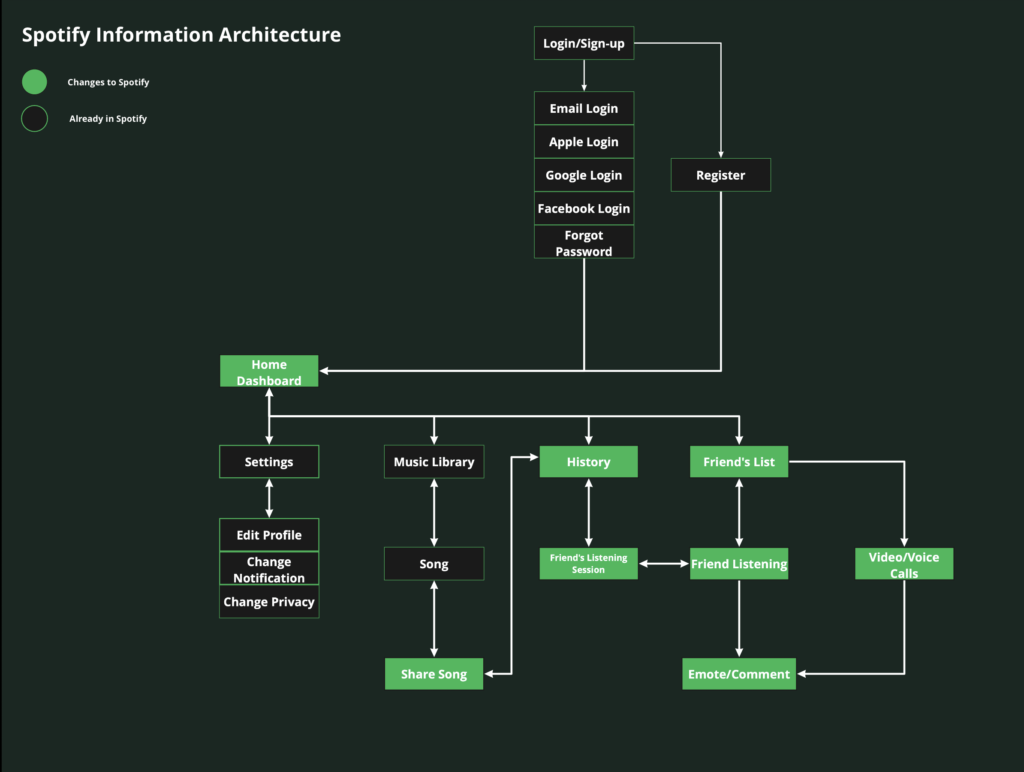
New Master User Flow
This new user flow represented the integration of existing Spotify user flow with our new user flow for Spotify Together.
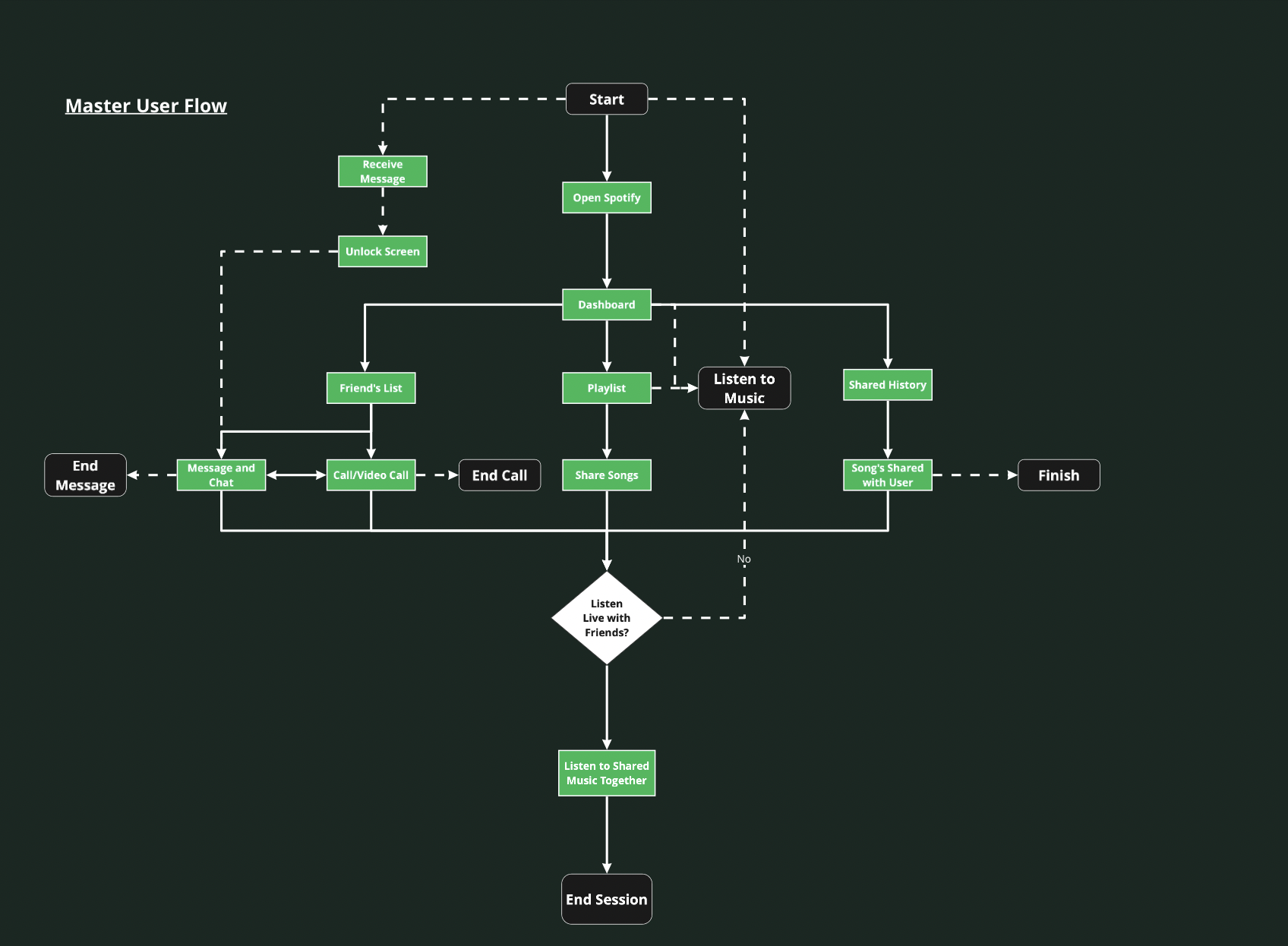
Our design concept
Here we went from low fidelity to high fidelity on our Prototype.
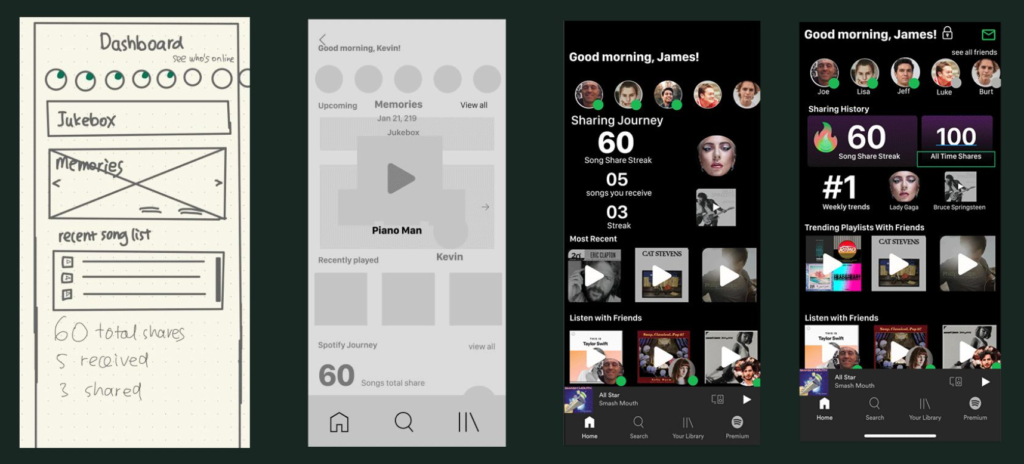
Prototype Usability Testing v.1
This user was interested in the listen in real time feature. Listen in on his thoughts.
Prototype v.1 & v.2
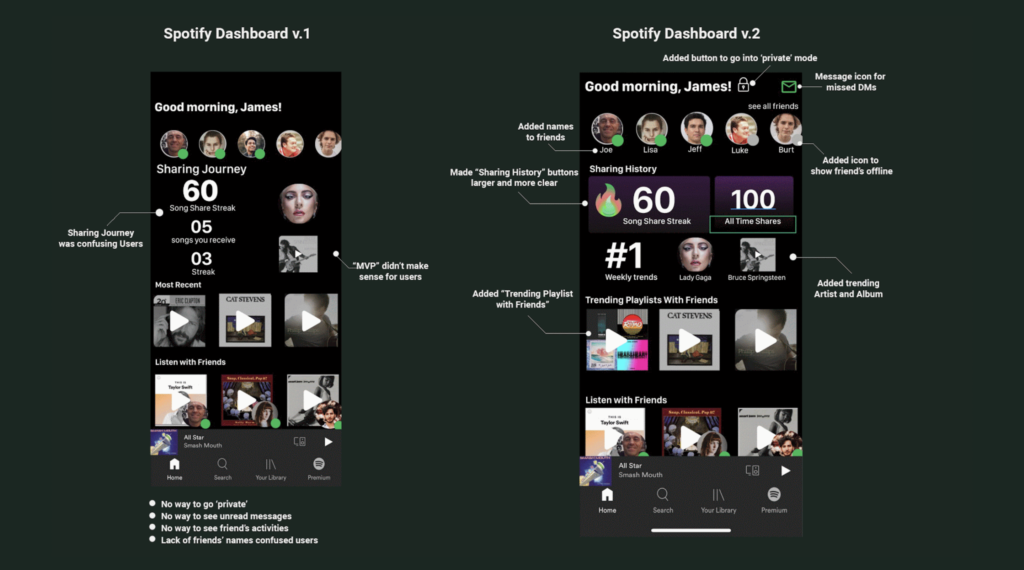
Prototype Usability Testing v.2
This user was interested in using the real time chat and listen feature.
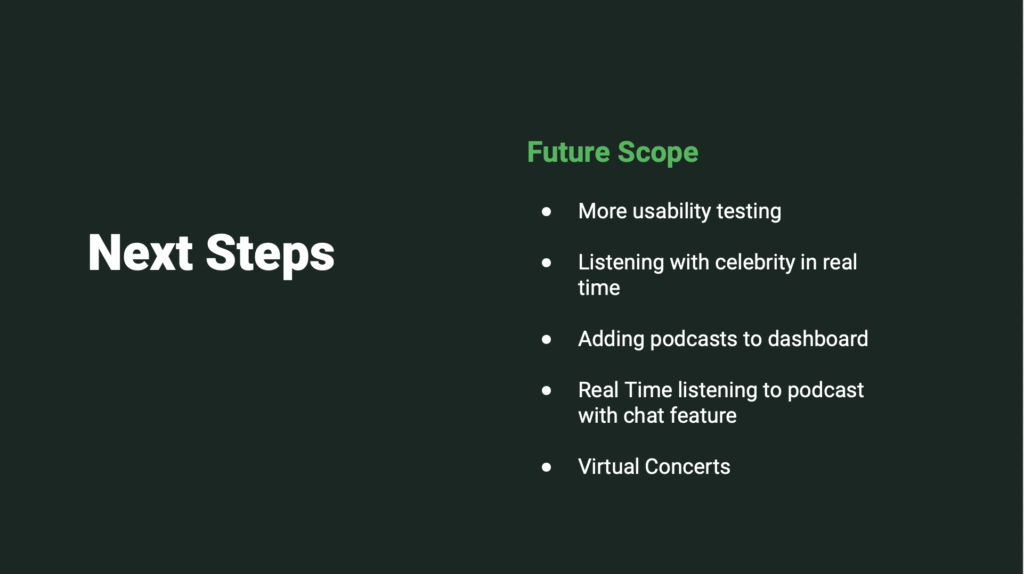
Final Thoughts...
Moving forward, would continue to iterate and test in order to find the sweet spot for the user. One area, I’d particularly like to explore is the spacing for the layout to make it less cramped. One possible design could be to reintroducing a concept we originally scraped in our mid-fidelity wire flows.